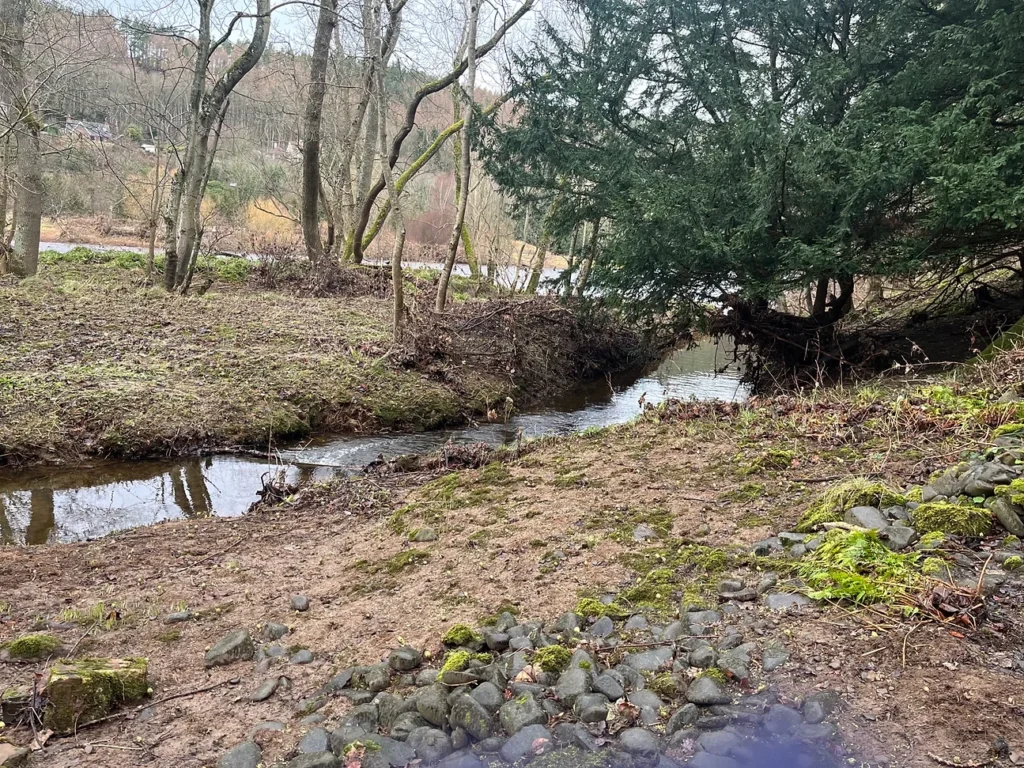Living right next to the River Tweed in the Scottish Borders has its benefits, but it can have a few downsides too. The recent floods here in southern Scotland kept us on our toes and a few sleepless nights watching the river levels creep slowly up the embankment which borders our garden and the beautiful ancient riverine or riparian woodland that we are lucky enough to own.
Riparian or riverine woodlands are woodland or forests which are located along a river, stream or alongside lakes or lochs. These woodlands form critically important habitat for a variety of wildlife and often they are very biodiverse, with a huge range pf plants, mammals, birds and invertebrates. Riparian woodlands also often form corridors for wildlife, linking different habitats together – and these links are critically important for wildlife as they look to cope with warming temperatures and the changes that this causes. These habitats are, however, becoming increasingly rare, through land management such as agriculture or development for housing.
Riparian woodlands also perform an important flood management role. It is very natural for riparian woodlands to flood – as I kept telling myself (!). Trees, especially native, mature trees, dead wood and fallen logs, branches, plants and leaf litter all act to slow down the flow of floodwaters, through creating natural channels and dams, pooling water in some places and moving it along in others.

The ability of land to absorb water can only go so far however. Land management practices such as overgrazing, tree felling or development-led straightening of watercourses, destabilise land and reduce the ability of it to mitigate against flooding and all of the other benefits it provides. Fantastic projects such as the Eddleston Water Project have worked to try and re-meander waterways to improve drainage and water flow.
According to Rewilding Britain, natural flood management makes up less than one per cent of the flood defence budget — it should be around 20 times that. There are a number of natural ways that can help reduce and manage flooding risk, which include wetland and peatland restoration, native tree planting and regeneration of species such as willow and changes to agricultural practice to reduce stocking densities as a mechanism to reduce soil erosion and compaction from livestock. As Rewilding Britain reports, in mid Wales, where shelter belts of trees were planted across sheep pastures, water infiltrated into the soil under the trees up to 60 times faster than when the pasture was tree-free. The tree roots appear to create channels down which the water can flow, allowing the soil to function as a sponge. In addition, intensive grazing by livestock such as sheep or cows, removes deep vegetation and causes compaction of the soil, causing water to pool on the surface rather than being absorbed.

As I walked along our woodland path, I was struck by how the deep floodwaters had scoured the woodland undergrowth – leaving some patches free of vegetation, but also exposing new plant growth. Much of the vegetation had been swept back along the river, bringing valuable minerals back into the water, to benefit fish and other aquatic life. A very powerful and very natural process which could be harnessed to benefit us in many ways.




